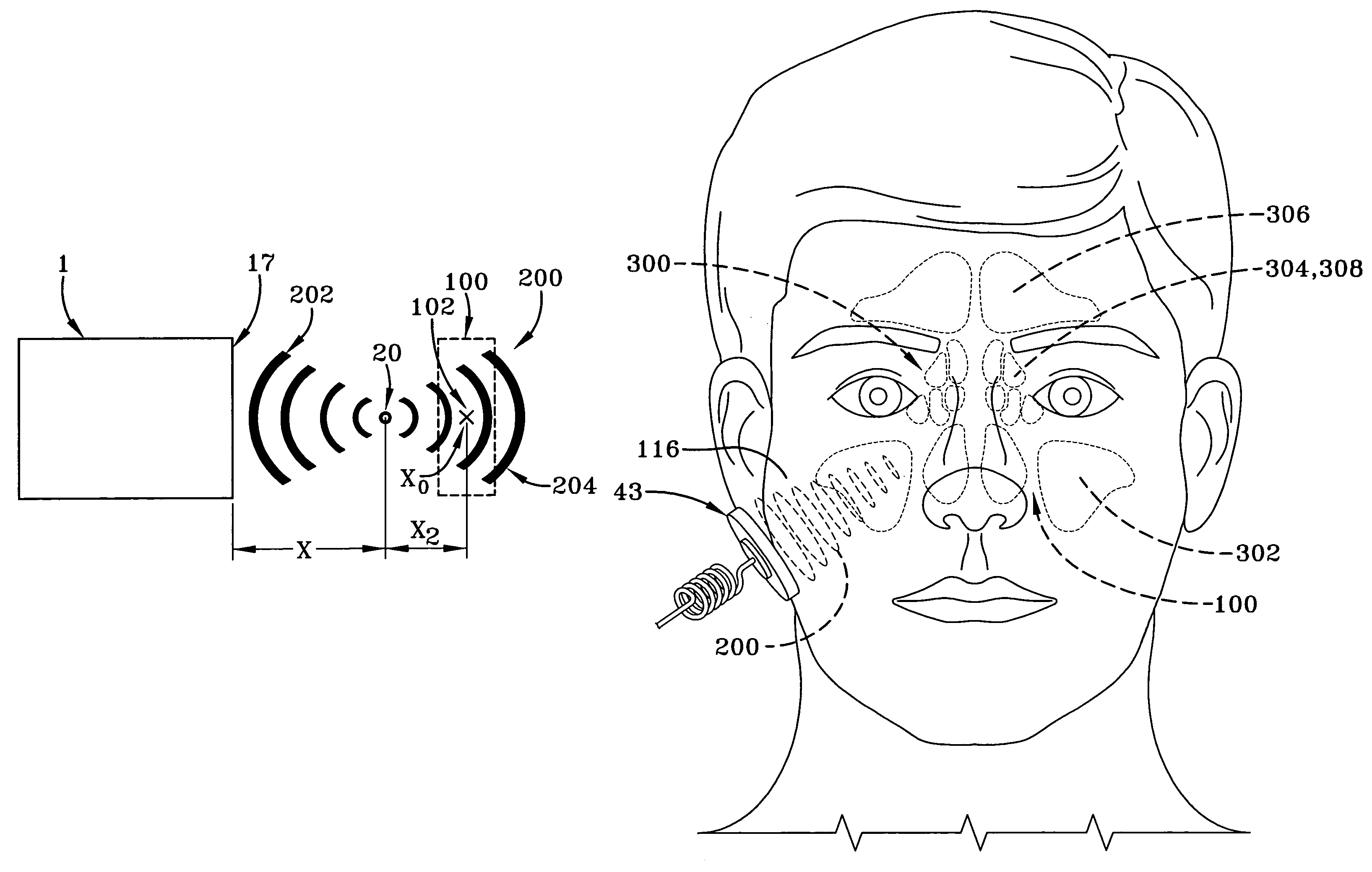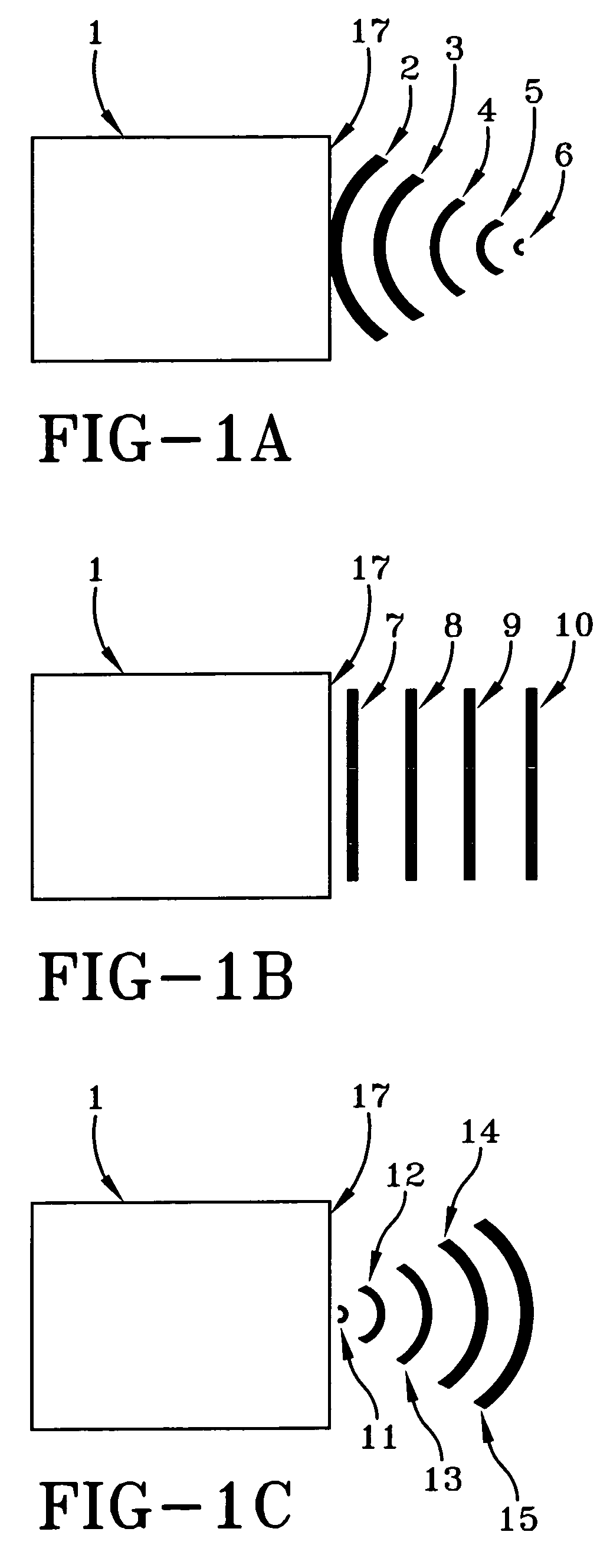Germicidal method for treating or preventing sinusitis
a germicidal method and sinusitis technology, applied in the field of germicidal methods to treat sinusitis, can solve the problems of sinus attack intense pain, sinus pressure, and vacuum creation
- Summary
- Abstract
- Description
- Claims
- Application Information
AI Technical Summary
Benefits of technology
Problems solved by technology
Method used
Image
Examples
Embodiment Construction
[0092]The present invention relates to the use of various therapeutic pressure pulse wave patterns or acoustic shock wave patterns as illustrated in FIGS. 1-12 for treating various nasal or sinus related diseases or conditions or for preventing such conditions from occurring. Each illustrated wave pattern will be discussed later in the description, however, the use of each has particularly interesting beneficial features that are a remarkably valuable new tool in the fight against sinus diseases.
[0093]With reference to FIG. 13, a view of a patients head showing the nasal or sinus region 200 is shown.
[0094]The current preventive procedure used to eliminate viral, fungal or bacterial infections is the use of antibiotics or nasal sprays having steroids to reduce inflammation and swelling of the nasal passages. The next step in current treatment is surgery.
[0095]Shock waves are a completely different technology and a quantum leap beyond current treatments. The mechanism of shock waves i...
PUM
 Login to View More
Login to View More Abstract
Description
Claims
Application Information
 Login to View More
Login to View More - R&D
- Intellectual Property
- Life Sciences
- Materials
- Tech Scout
- Unparalleled Data Quality
- Higher Quality Content
- 60% Fewer Hallucinations
Browse by: Latest US Patents, China's latest patents, Technical Efficacy Thesaurus, Application Domain, Technology Topic, Popular Technical Reports.
© 2025 PatSnap. All rights reserved.Legal|Privacy policy|Modern Slavery Act Transparency Statement|Sitemap|About US| Contact US: help@patsnap.com



